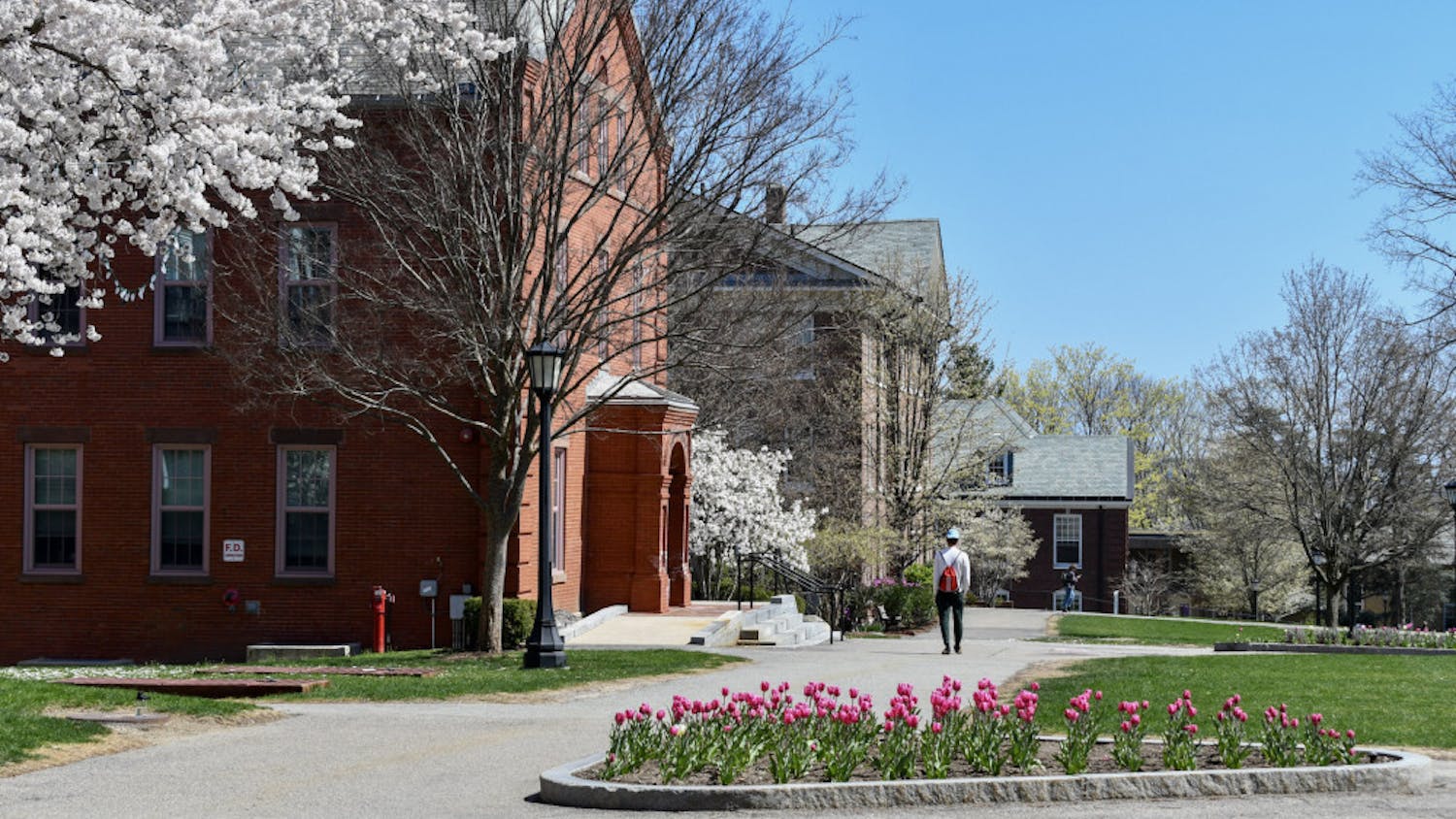Leaders of Tufts’ Center for Information and Research on Civic Learning and Engagement presented preliminary findings about the 2024 youth vote during a media briefing just two days after the Nov. 5 election. In line with national trends, the researchers found evidence of a rightward shift among voters ages 18 to 29, with particular declines in Democratic support among young white men and young Latine voters.
Founded in 2001, CIRCLE is a nonprofit research organization that focuses on youth civic engagement across the United States.
“In all of our work, we’re really concerned with understanding and addressing the barriers that prevent some young people from fully engaging in civic life and in understanding the inequities that prevent some young people, more than others, in engaging in civic life and in elections,” Communications Team Lead Alberto Medina explained at the start of the conference.
Newshouse Director Kei Kawashima-Ginsberg opened the presentation by showing preliminary data about youth voter turnout on Election Day. Approximately 42% of young voters ages 18 to 29 voted during the 2024 presidential election, representing a lower youth turnout rate than the 2020 presidential election — where youth turnout exceeded 50% — but a similar turnout rate to 2016. Most swing states, however, saw higher levels of voter turnout than the national average, with an aggregate turnout of approximately 50% in Georgia, Michigan, Nevada, North Carolina, Pennsylvania and Wisconsin.
CIRCLE had observed warning signs of declining youth voter turnout in the months before Election Day. According to Kawashima-Ginsberg, most U.S. states lagged behind 2020 levels in terms of the number of young people living there who were registered to vote. States with strong voter registration policies, however, saw higher levels of youth voter registration than in 2020.
“In 2024, because we also had a decline in midterm turnout, [we saw] less and less investment … in the community to make sure that young people were invited [and] reached out [to] early on, at an early age, to make sure they registered to vote,” she said. “Those [outreach efforts] needed to be done much more.”
During the next portion of the conference, Abby Kiesa, deputy director of CIRCLE, summarized the organization’s findings about youth support for Vice President Harris and President-elect Donald Trump, using data from the AP VoteCast Survey.
“When we’re talking about young people nationally, that means the margin of error is under two points, and so there’s a large amount of accuracy when we’re talking about young people as a whole,” she said. “We did absolutely see that there were more young people in this election cycle supporting now-President-elect Trump.”
Among 18- to 29-year-olds, 51% supported Harris while 47% supported Trump. This represents far closer support rates than in 2020 when the APVote Cast Survey found that 18- to 24-year-olds supported President Joe Biden by 29 points more than Trump — compared to just 10% for Harris over Trump in this election cycle for the same age group.
Kiesa also drew attention to the increased support for Trump amongst both young male and female voters, noting the more prominent rightward shift among young men. 56% of young men and 41% of young women voted for Trump this year, compared to 41% of young men and 33% of young women in 2020.
Support for Trump also increased within different racial groups, Kiesa said.
“Young people of color were much more likely to be supportive of the Democratic candidate than white youth,” she said. “At the same time, we can also see … that support for the Democratic presidential candidate compared to 2020 did decrease for [Black, Latine and Asian American young voters].”
According to AP VoteCast data, Black youth support for the Democratic candidate dropped from 87% in 2020 to 75% in 2024, while Asian American youth support for the Democratic candidate dropped from 83% to 72%. Among young Latine voters, the decline in Democratic support was most stark: 58% supported Harris, compared to 73% who supported Biden in 2020.
“Young white men were by far the most supportive of President-elect Trump. The next group, — roughly 14 to 15 points behind white young men — were young white women and young Latino men,” she said. “That illuminates a little bit of differences amongst young people by gender and race and ethnicity.”
Kiesa also analyzed youth vote choice in regard to educational attainment and rurality, finding strong support for Trump in small town and rural areas, as well as amongst voters with a high school degree or less.
During the final portion of the presentation, Kawashima-Ginsberg presented CIRCLE’s early findings about the main issues that drove the youth vote in 2024. According to the AP VoteCast survey, 40% of 18- to 29-year-olds named the economy as the most important issue facing the country, followed by 13% of young voters choosing abortion and 11% picking immigration.
“Young people really are issue voters, and this is a generation — particularly Gen Z — that’s been struggling the most in recent generations with their own footing in the economy,” Kawashima-Ginsberg explained during the Q&A portion of the event. “This is a very heavily indebted generation who’s also struggled to kind of get their career and their income going. After the pandemic, they were the first to be let go [and the] last to come back to income-earning, living wage jobs. So the economy really may have been the real issue that truly, truly resonated with young people.”
In response to a question about the factors that generally drive high youth turnout, Kiesa stressed the importance of young people being civically informed and engaged.
“Fundamentally, there is the need for young people to have access to concrete, civic information and have people they can process the information with,” she said. “Not only is it access to information, but it’s from multiple places, ideally, and feeling like you’re included in that conversation.”






